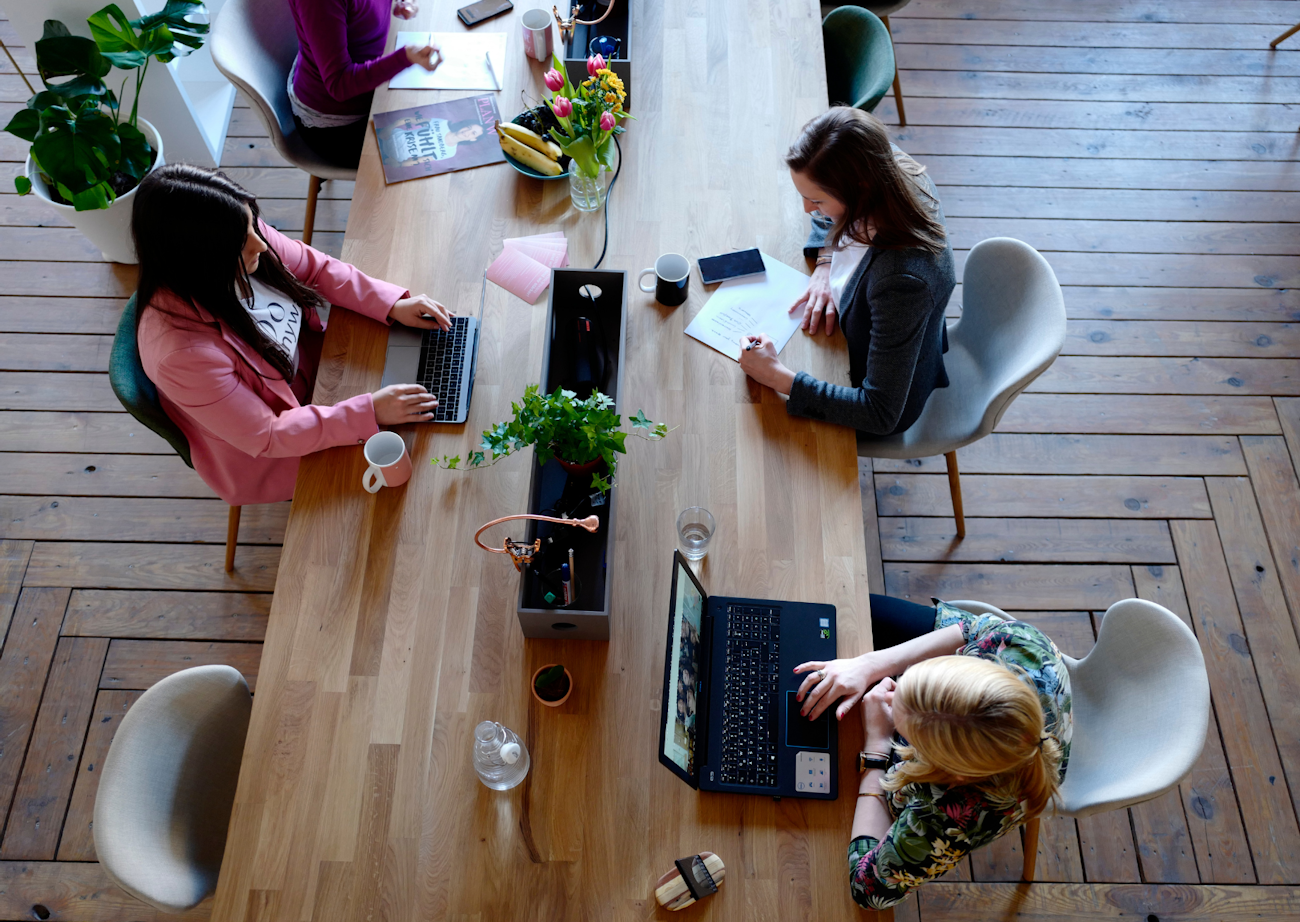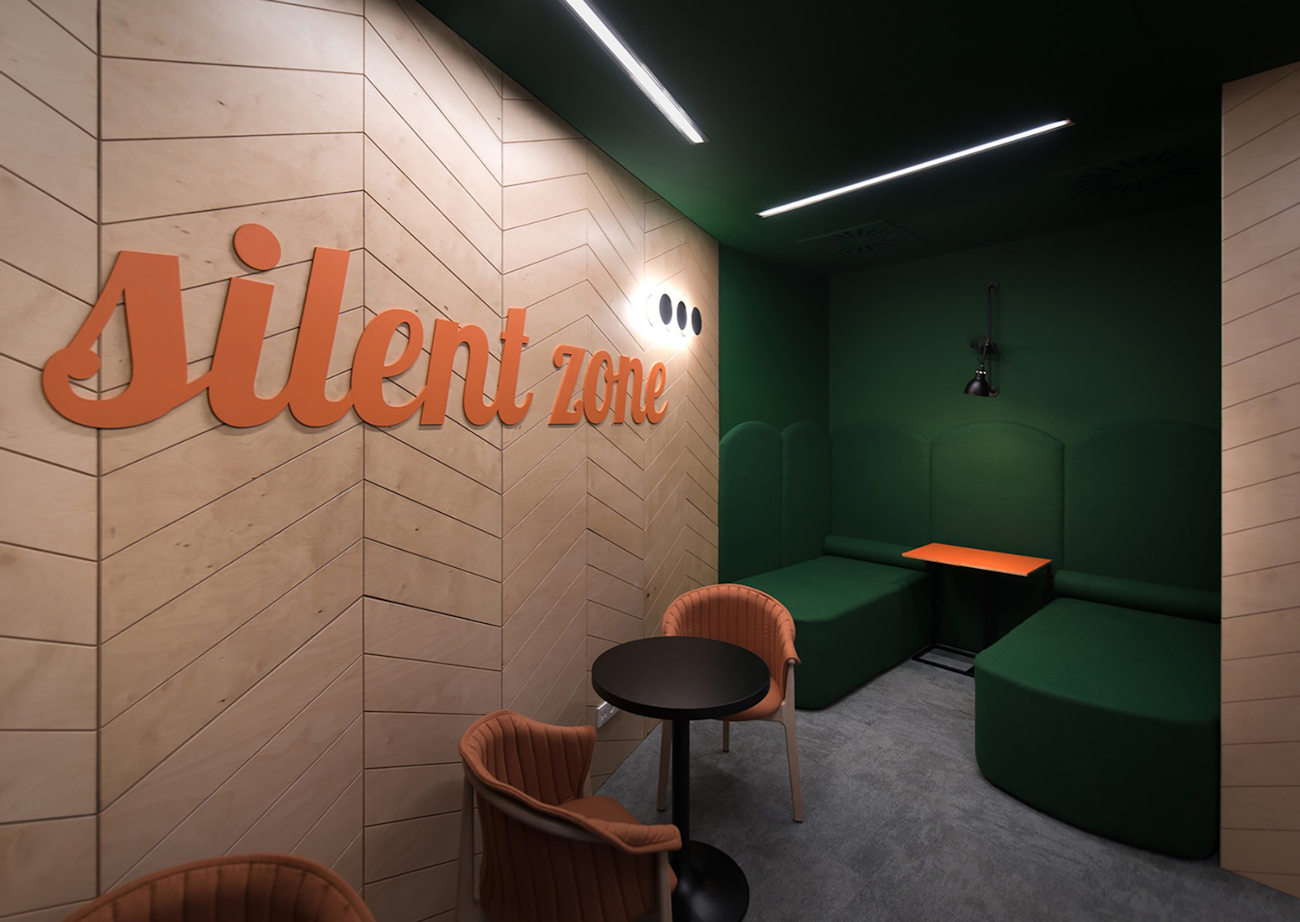Insights
Top 5 Office Furniture and Design Predictions for 2023

The past few years have redefined how we think of office spaces and their design. As the needs of office workers change, so too must the approach to workplace design.
So far in 2022, there has been an ever growing shift towards the more flexible "hybrid workplace model", influenced largely by the COVID-19 pandemic in which many people worked from home. With more and more employees looking for workplaces that offer a mix of collaborative in-office spaces and remote working, the market for hybrid office design is expected to continue rising in the coming years.
Which brings us to the question: what else can we expect to see from office furniture and design trends in 2023?
- Coworking spaces?
- A focus on sustainability?
- Technological advancements?
- Open layouts?
- More diverse and inclusive spaces?
In this article, we will take you through our top five office design trend predictions for 2023 that will inspire and inform the way you approach your own office design.
1. Offices designed for coworking
Coworking spaces have become a widely used element in modern office design, especially as more companies adopt a hybrid workplace model. According to a 2021 study, 40% of employees who work remotely stated they would like to have the option to work from a third-party place such as a coworking space.
What is a coworking space?
Coworking spaces are membership-based workspaces where diverse groups of remote workers and other independent professionals work together in a shared, communal setting. Unlike a traditional office, coworking spaces consist of members who work for a range of different companies, ventures, and projects.
What are the benefits of coworking spaces?
For businesses with a largely remote or hybrid workforce, having a private office space is not cost-effective. Coworking spaces allow businesses to incorporate the flexibility of remote working and the collaborative elements of in-office working without the need for privately owned office space. Other benefits include:
- Increased Productivity
- Networking & Collaboration Opportunities
- Flexible Working Schedule
- Work-Life Balance

2. Offices designed for sustainability
According to a survey of 2,000 office workers, 65% of employees stated they preferred to work for a company that had a strong environmental policy amid the current climate crisis. This shift towards a more environmentally conscious workplace has prompted business owners to create greener, more sustainable office environments.
Although sustainable office design is not a new concept, we expect it to continue influencing office design in 2023 and beyond.
How to design a more sustainable office space in 2023
There are plenty of innovative ways to prioritise sustainability in your office design without compromising on style and functionality, such as:
- Choosing locally sourced building materials to reduce transportation emissions
- Investing in longer-lasting, sustainable furniture that can be recycled or repurposed
- Choosing Energy-Efficient lighting that is solar powered or LED
- Incorporating biophilia as a key element in the design
What are the benefits of incorporating sustainable office design elements?
Other than reducing carbon emissions, implementing sustainable office design elements has many other notable benefits, both for employees and business owners. These include:
- Reduced energy bills
- Improved employee wellbeing and morale
- Improved reputation
- A functional and long-lasting office space

3. Technological advancements in office design
Today's hybrid workforces rely heavily on modern technology and communication solutions in order to work efficiently. After the pandemic, the use of video conferencing software such as Microsoft Teams became a staple for hybrid workplaces. Although video conferencing software is predicted to remain popular, there are more recent technological advancements influencing office trends.
Meeting pods, for example, are becoming increasingly popular in hybrid workplaces. These pods allow people to enter a ventilated private space, which is optimally set up for in-person or video meetings.
Another way technology is expected to be incorporated into modern office design is through the use of innovative storage solutions such as smart lockers. Smart office lockers offer much more than just a safe place to store your belongings. They give employees the freedom to work wherever and whenever they want, whilst also allowing for mutual cooperation—saving a lot of time for administrators.

4. Adopting open floor plans in office design
While open floor plans are not new, with the recent rise in employee preference for more collaborative workplace environments, many businesses continue to opt for open-plan office designs.
Open-plan offices promote collaboration and communication between different employees, regardless of their job position. By creating a "one space for all" environment through an open-plan interior, employees feel less segregated from their colleagues and superiors, increasing creativity and a sense of community within the workplace. But this is not the only advantage of an open-plan office; other benefits include:
- Lower office set up costs
- More flexibility
- Improved company culture
- Possibilities for multiple layouts to suit changing trends

5. Office design that emphasises diversity and inclusion
Promoting and supporting diversity in the workplace is an important aspect of office design and is becoming a workplace priority for many employees. However, to reap the benefits of a diverse workforce, it’s vital to have an inclusive environment where everyone feels able to participate and achieve their potential.
How to design a diverse and inclusive office space
The first step towards designing an inclusive workplace is acknowledgement and acceptance of differences. It is about offering choices to people. There are things that can be done very easily without much additional cost or effort, such as:
Closed fist rule
Storage units and other equipment with U-shaped handles, push latches, side-hinged doors, and other elements that can be operated with a closed fist. Provide lever handles instead of doorknobs or install doors that can be opened with an elbow that make entering and exiting easy for people with disabilities.
Create communal areas
Offices are not just places of work but also for interaction and team bonding. Therefore, incorporating welcoming communal areas where employees can relax and engage with each other is essential for an inclusive office space. These spaces create good social morale among workers, leaving them feeling valued and included in the office environment.
Some of the office furniture we provide that is great for communal spaces:
- Sona: An ideal solution for creating quiet islands in large open-space offices It has the additional benefit of media ports for connecting and charging mobile devices and can serve as a rest zone for those who need it.
- The MishellSoft: The Mishell Soft is a sofa designed to provide extra comfort for employees looking to take time out from their desks and socialise with their colleagues.
- Rosco: A collection of modular sofas, armchairs, and pouffes, the Rosco provides comfortable back support and can be freely rearranged. This collection comes with a coffee table with a similar design, so that employees can relax and put down their coffee.

Ergonomic, agile workspaces
The aim is to create workspaces that are easily adaptable to suit the needs of all employees. Height-adjustable desks are a great option, as they can be easily changed to accommodate all needs. Ergonomic chairs will be comfortable for everybody and will provide sturdy lumbar support. Another way you can incorporate ergonomic design into your office space is through smart storage solutions, so employees can organise their workspace and access their supplies with ease.
Other ways to incorporate diversity and inclusivity into your office design include:
- Include plenty of natural light and biophilic elements to reduce stress levels
- Implement acoustic solutions where noise distraction could be an issue
- Consider implementing gender-neutral toilets
- Include ramps instead of—or in addition to—stairs.
- Smart technologies and apps that can help staff adjust lighting and heating as per their own personal preferences
- Textural and different coloured walls and surfaces for the visually impaired

Office furniture and design trends from Haiken
Overall, in 2023, it seems the focus will be on making the workplace a more sustainable, flexible, and collaborative space that caters to the needs of today’s hybrid workforce. Office design is set to focus on creating more inclusive spaces that keep employees engaged, whilst also providing flexibility. This will be achieved through implementing open plan layouts for team working; adding elements of sustainable design through recycled furniture and materials; creating ergonomic workspaces with adjustable and modular furniture; and providing coworking environments to keep remote workers connected.
If you would like to know more about the office furniture we provide, please feel free to contact us today and we will be happy to help!
